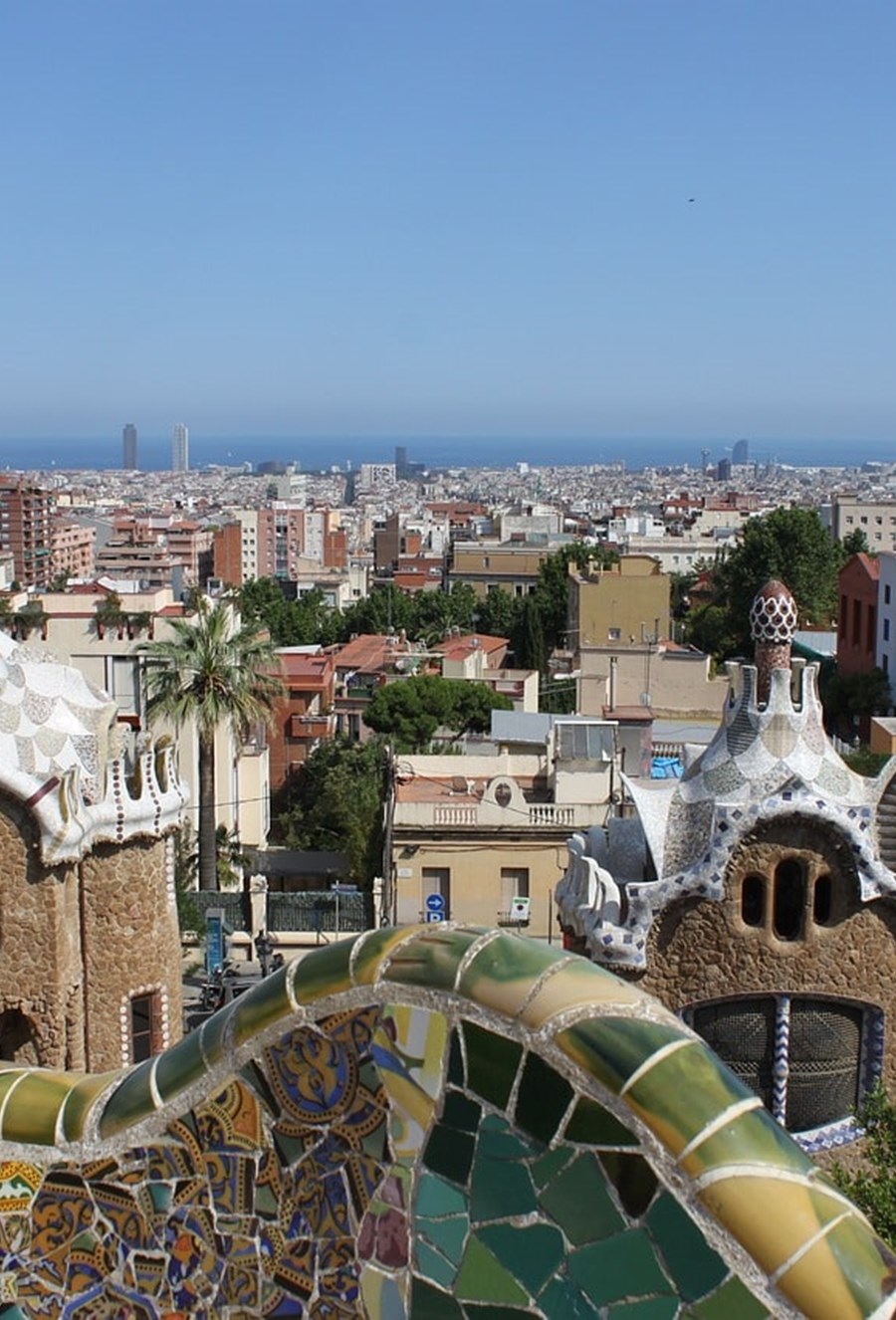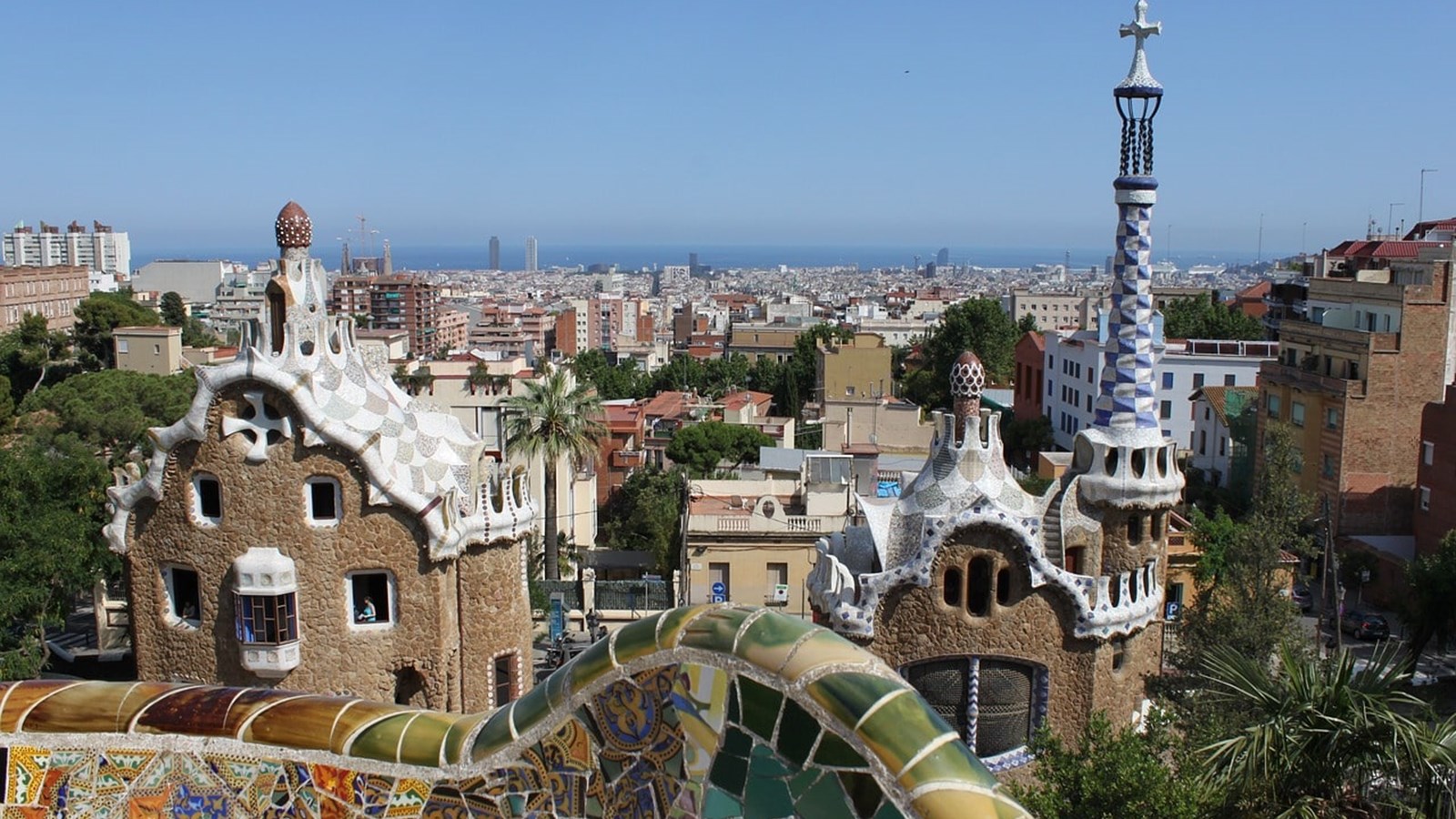The 30 Best Barcelona Landmarks Explained
13 February 2024
Are you ready for an exciting journey through the vibrant city of Barcelona? In this article, we'll take you on a captivating tour of Barcelona's most famous landmarks, from the awe-inspiring Sagrada Família to the enchanting Park Güell. Get ready to immerse yourself in the rich history, stunning architecture, and cultural treasures that make Barcelona a must-visit destination for adventurers and scholars alike. Let's embark on an unforgettable exploration of this iconic city!
1. La Sagrada Família
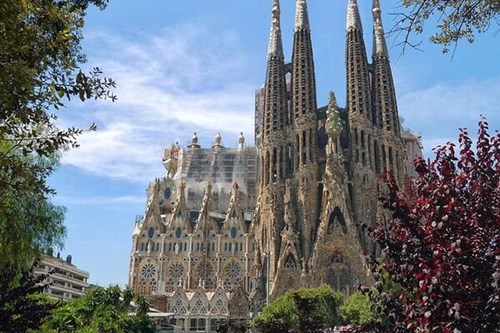
The Sagrada Família is one of Barcelona's most iconic landmarks, renowned for its unique and breathtaking design. Designed by Catalan architect Antoni Gaudí, construction began in 1882 and is still ongoing, with an anticipated completion date in the 2020s, likely to be for the centenary of Gaudi's death in 2026.
This stunning basilica combines elements of Gothic and Art Nouveau styles, featuring intricate facades adorned with elaborate sculptures and colourful stained glass windows. Its towering spires dominate the Barcelona skyline, making it a must-visit destination for tourists and a symbol of the city's architectural brilliance.
Did you know? Despite being under construction for over a century, the Sagrada Família has no official architect, as Gaudí's original plans were destroyed in a fire. Architects have relied on photos, drawings, and remaining fragments to continue construction.
Address: Carrer de Mallorca, 401, 08013 Barcelona
2. Park Güell
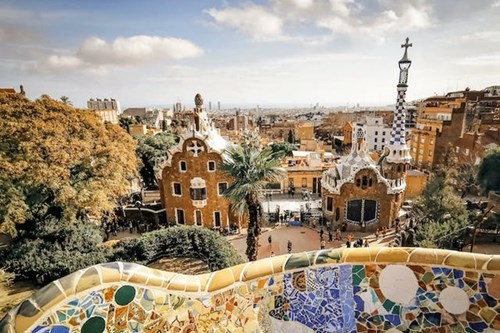
Park Güell is a whimsical public park designed by renowned architect Antoni Gaudí, located on Carmel Hill in Barcelona. Construction began in 1900 and was completed in 1914. The park is characterised by its vibrant mosaic sculptures, winding pathways, and organic architectural elements.
The park was originally conceived as a housing development but was later transformed into a public park. Visitors can explore Gaudí's fantastical creations, including the famous multicoloured lizard statue and the iconic serpentine bench.
Did you know? In 1984, Park Güell was declared a UNESCO World Heritage Site in recognition of its outstanding universal value.
Address: Carrer d'Olot, 08024 Barcelona, Spain
3. Casa Batlló
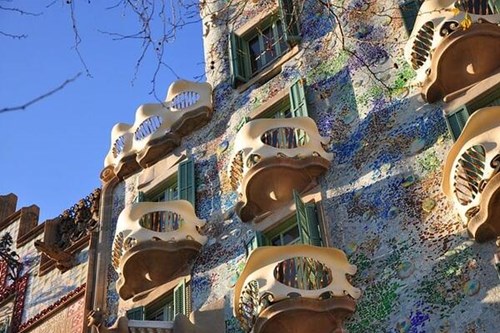
Casa Batlló is a striking residential building located in the heart of Barcelona, designed by renowned architect Antoni Gaudí. Construction began in 1877 and was completed in 1906. This architectural gem is characterised by its surreal facade, adorned with colourful mosaic tiles, undulating shapes, and organic motifs.
Gaudí's innovative use of light, ventilation, and space creates a uniquely immersive experience for visitors exploring the interior of the building. Casa Batlló stands as a testament to Gaudí's genius and is celebrated as one of Barcelona's most iconic landmarks.
Did you know? The facade of Casa Batlló is said to represent the legend of Saint George and the dragon, with the roof resembling the dragon's scales and the tower representing the lance of Saint George.
Address: Passeig de Gràcia, 43, 08007 Barcelona
4. La Pedrera (Casa Milà)
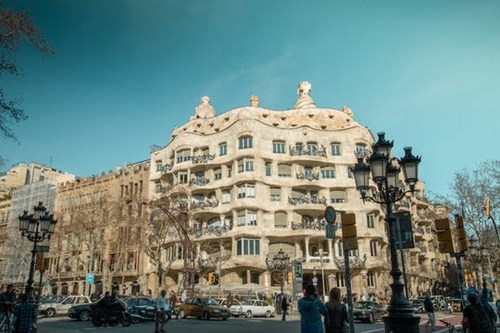
La Pedrera, also known as Casa Milà, is a modernist building designed by architect Antoni Gaudí and located in the Eixample district of Barcelona. Construction began in 1906 and was completed in 1912. The building is renowned for its undulating stone facade, wrought-iron balconies, and surreal rooftop sculptures.
La Pedrera showcases Gaudí's innovative approach to architecture, incorporating natural forms and elements to create a harmonious and functional living space. Today, it serves as both a cultural landmark and residential building, offering visitors insight into Gaudí's visionary designs.
Did you know? La Pedrera was initially met with controversy and criticism for its unconventional design. It was even nicknamed "La Pedrera," which means "the quarry," due to its rough-hewn appearance.
Address: Pg. de Gràcia, 92, 08008 Barcelona
5. Camp Nou
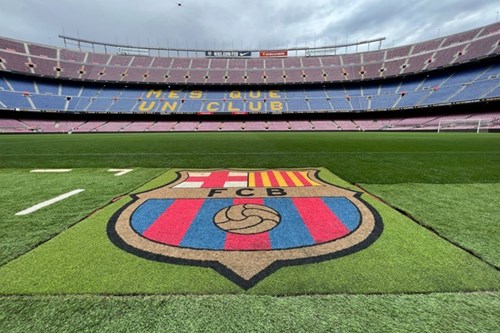
Camp Nou is the legendary home stadium of FC Barcelona, located in the Les Corts neighbourhood of Barcelona. Construction began in 1954, and the stadium was inaugurated in 1957. With a capacity of over 100,000 spectators, it is one of the largest football stadiums in the world.
Camp Nou has witnessed countless historic football matches and hosted numerous international events, solidifying its status as an iconic sporting venue. In addition to football matches, the stadium offers guided tours, allowing visitors to explore its hallowed grounds and learn about the rich history of FC Barcelona.
Did you know? Camp Nou's official name, "Camp Nou," translates to "new field" in Catalan. It was originally built to replace the club's previous stadium, Camp de Les Corts, which had become too small to accommodate the growing number of fans.
Address: Carrer d'Aristides Maillol, 12, 08028 Barcelona
6. Gothic Quarter (Barri Gòtic)
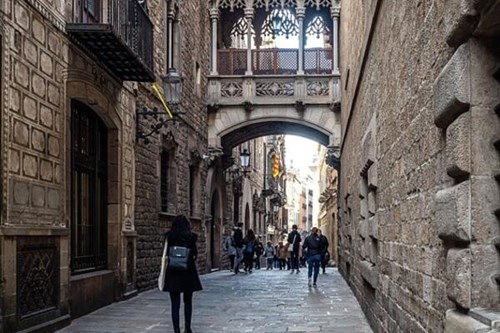
The Gothic Quarter, or Barri Gòtic, is the historic heart of Barcelona, characterised by its narrow medieval streets, ancient buildings, and charming squares. The quarter dates back to the Roman period and is home to several significant landmarks, including the Barcelona Cathedral and the Plaça Reial.
Visitors can wander through the labyrinthine streets, marvel at centuries-old architecture, and explore hidden gems tucked away in quiet corners. The Gothic Quarter is not only a showcase of Barcelona's rich history but also a vibrant neighbourhood filled with shops, cafes, and cultural attractions.
Did you know? Beneath the streets of the Gothic Quarter lies an extensive network of underground passages and archaeological remains, providing insights into the city's ancient past. These subterranean tunnels are open to the public for guided tours, offering a glimpse into Barcelona's hidden history.
Address: Barri Gòtic, 08002 Barcelona, Spain
7. Palau de la Música Catalana
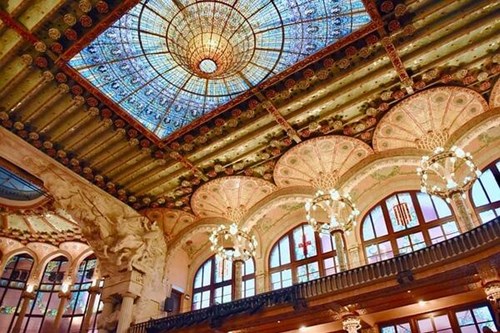
The Palau de la Música Catalana is a stunning concert hall located in the Sant Pere neighbourhood of Barcelona. Designed by architect Lluís Domènech i Montaner, construction began in 1905 and was completed in 1908.
This architectural masterpiece is renowned for its intricate Catalan Modernisme style, featuring ornate sculptures, colourful mosaics, and a breathtaking stained glass skylight. The concert hall's interior is equally impressive, with its richly decorated walls and ceilings adorned with floral motifs and allegorical figures.
The Palau de la Música Catalana serves as a cultural hub for music lovers from around the world, hosting concerts, recitals, and performances by renowned artists.
Did you know? The Palau de la Música Catalana was declared a UNESCO World Heritage Site in 1997 in recognition of its outstanding architectural and artistic significance.
Address: Carrer del Palau de la Música, 4-6, 08003 Barcelona
8. Montjuïc Castle
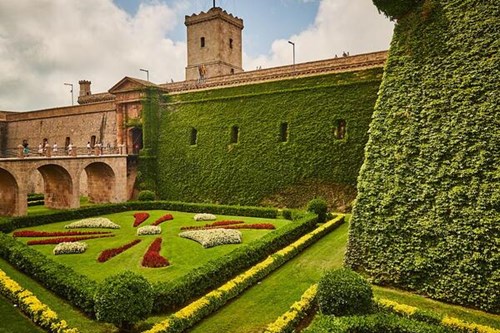
Image courtesy: Teleferic de Montjuïc
Montjuïc Castle is a historic fortress situated atop Montjuïc hill overlooking the city of Barcelona and the Mediterranean Sea. The origins of the castle date back to the 17th century, although the current structure was largely rebuilt in the 18th century.
Over the centuries, Montjuïc Castle has served various purposes, including as a military fortress, a prison, and a strategic lookout point. Today, it stands as a symbol of Barcelona's rich history and offers visitors panoramic views of the city below. The castle is accessible by cable car, bus, or a scenic walk through the Montjuïc gardens.
Did you know? During the Spanish Civil War (1936-1939), Montjuïc Castle served as a prison and execution site for political prisoners. Today, visitors can explore the castle's underground tunnels and learn about its tumultuous past through exhibitions and guided tours.
Address: Carretera de Montjuïc, 66, 08038 Barcelona
9. Barcelona Cathedral (Cathedral of the Holy Cross and Saint Eulalia)
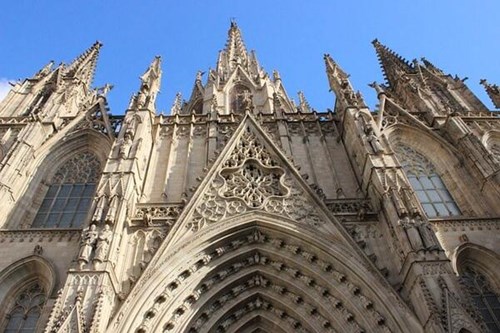
The Barcelona Cathedral, also known as the Cathedral of the Holy Cross and Saint Eulalia, is a magnificent Gothic cathedral located in the heart of the Gothic Quarter. Construction began in the 13th century.
The cathedral is dedicated to Saint Eulalia, the patron saint of Barcelona, whose remains are entombed within the crypt. Visitors can admire the cathedral's impressive facade, adorned with intricate carvings and statues, and explore its serene interior, which houses beautiful stained glass windows, chapels, and a cloister garden.
Did you know? Did you know that Saint Eulalia, a patron of Barcelona, kept geese when she was young? She was just thirteen when she refused to give up her Christian faith, leading to her being martyred thirteen times, ending with her crucifixion and eventual sainthood. Thirteen geese were left to roam and guard the Barcelona Cathedral's cloister in her memory. Legend says if any of these geese were harmed or lost, the cathedral would collapse.
Address: Pla de la Seu, s/n, 08002 Barcelona
10. La Rambla
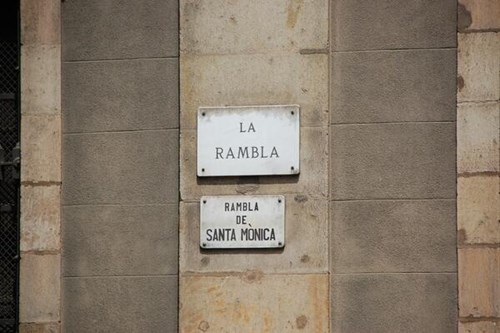
La Rambla (also called Las Ramblas) is a bustling tree-lined boulevard in the heart of Barcelona, stretching from Plaça de Catalunya to the Christopher Columbus Monument at Port Vell. Constructed in the 18th century on the site of a former riverbed, Las Ramblas is renowned for its vibrant atmosphere, lined with cafes, shops, street performers, and flower stalls.
The boulevard is divided into several sections, each with its own distinct character, including the lively La Rambla de les Flors, known for its flower market, and the iconic La Rambla de Canaletes, famous for its ornate Canaletes Fountain. La Rambla is a popular destination for both locals and tourists, offering endless opportunities for people-watching, shopping, and dining.
Did you know? La Rambla is named after the Arabic word "ramla," which means "sandy riverbed." The boulevard was originally a seasonal stream that flowed into the Mediterranean Sea.
Address: La Rambla, 08002 Barcelona
11. Barceloneta Beach
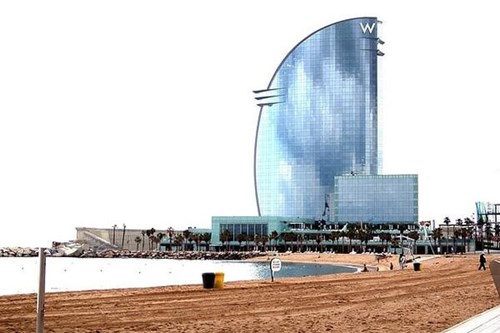
Barceloneta Beach is one of Barcelona's most popular urban beaches, located in the Barceloneta neighbourhood along the city's coastline. With its golden sands, clear waters, and palm-lined promenade, Barceloneta Beach offers a picturesque setting for sunbathing, swimming, and water sports. The beach is also surrounded by a variety of seafood restaurants, beach bars (chiringuitos), and shops, making it a vibrant hub of activity throughout the year.
Did you know? Barceloneta Beach was once a working-class neighbourhood inhabited primarily by fishermen and their families. Today, it remains a beloved recreational area for locals and tourists alike, offering a perfect blend of relaxation and seaside fun.
Address: Passeig Marítim de la Barceloneta, 16, 08003 Barcelona
12. Magic Fountain of Montjuïc
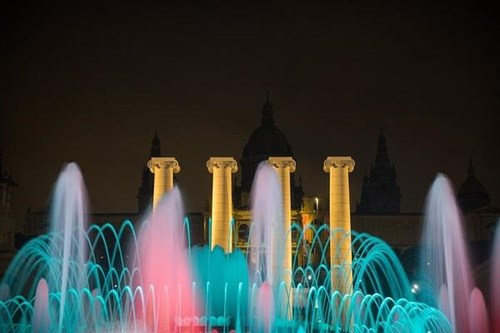
The Magic Fountain of Montjuïc is a spectacular fountain located at the base of Montjuïc hill in Barcelona. Built for the 1929 Barcelona International Exposition, the fountain is renowned for its dazzling light and music shows, which usually take place nightly.
The fountain's elaborate displays combine synchronised water jets, coloured lights, and music to create mesmerising performances that attract visitors from around the world.
The Magic Fountain is surrounded by expansive gardens and offers stunning views of the Palau Nacional and Montjuïc hill, making it a must-see attraction for visitors to Barcelona.
Did you know? The Magic Fountain of Montjuïc was designed by Carles Buïgas, a Catalan engineer, and is considered one of the most iconic landmarks of Barcelona. Its inaugural performance at the 1929 exposition was attended by over 50,000 spectators.
Address: Plaça de Carles Buïgas, 1, 08038 Barcelona
13. Arc de Triomf
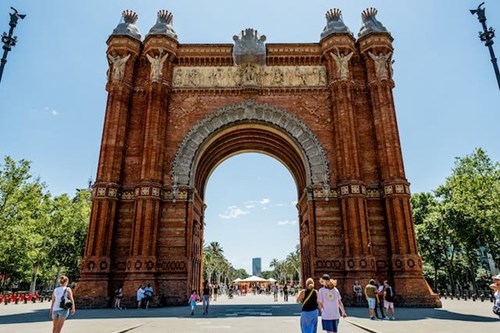
The Arc de Triomf is a triumphal arch located at the northern end of Passeig de Lluís Companys in Barcelona. Built as the main entrance for the 1888 Barcelona World Fair, the arch is a stunning example of Catalan modernism, designed by architect Josep Vilaseca i Casanovas.
The Arc de Triomf features intricate carvings, ornamental motifs, and sculptural details, paying homage to Barcelona's industrial and cultural achievements. Today, the arch serves as a symbol of welcome and celebration, welcoming visitors to the bustling Ciutadella Park and the vibrant neighbourhood of Eixample.
Did you know? The Arc de Triomf was originally constructed using red brick, but it was later covered with decorative ceramic tiles to enhance its appearance. The arch's colourful facade reflects the eclectic architectural style of Barcelona's modernist period.
Address: Passeig de Lluís Companys, 08003 Barcelona
14. Tibidabo
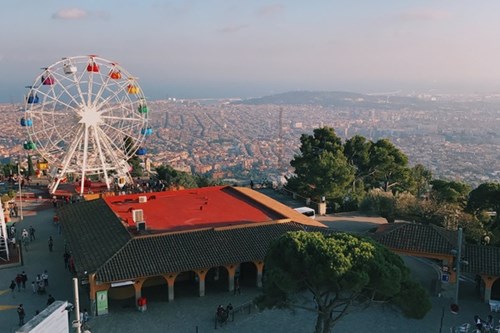
Tibidabo is the highest peak in the Serra de Collserola mountain range, offering panoramic views of Barcelona and the surrounding countryside. Atop the mountain sits the Tibidabo Amusement Park, one of the oldest in the world, featuring vintage rides, attractions, and a charming retro aesthetic.
The park also houses the Temple Expiatori del Sagrat Cor, a stunning church with a towering neo-Gothic facade and an observation deck offering unparalleled views of the city below. Tibidabo is a popular destination for both locals and tourists, offering a unique blend of natural beauty, history, and entertainment.
Did you know? The Tibidabo Amusement Park was inspired by the success of similar parks in Europe and the United States, and it originally opened its doors in 1905. Today, it retains much of its original charm and nostalgia, making it a beloved landmark of Barcelona.
Address: Plaça del Tibidabo, 08035 Barcelona
15. Columbus Monument (Monument a Colom)
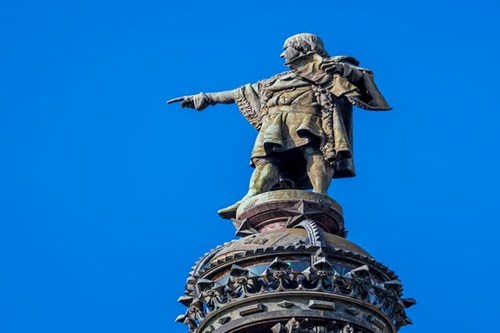
The Columbus Monument, or Monument a Colom, is a towering monument located at the lower end of La Rambla in Barcelona. Constructed in 1888 for the Barcelona Universal Exposition, the monument commemorates Christopher Columbus's first voyage to the Americas and serves as a tribute to his achievements.
Designed by Catalan architect Gaietà Buïgas i Monravà, the monument consists of a tall column topped by a bronze statue of Columbus pointing towards the sea. Visitors can ascend to the viewing gallery at the top of the monument for panoramic views of Barcelona's harbour and skyline.
Did you know? The Columbus Monument is located at the spot where Columbus reportedly returned to Barcelona after his historic voyage to the Americas in 1493. However, some historians debate the accuracy of this claim, suggesting that Columbus may have returned to a different port in Spain.
Address: Plaça de la Porta de Pau, s/n, 08001 Barcelona
16. Poble Espanyol
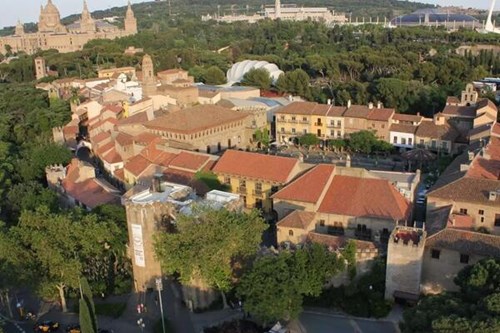
Image courtesy: Poble Espanyol
Poble Espanyol, or the Spanish Village, is an open-air architectural museum located on Montjuïc hill in Barcelona. Built for the 1929 Barcelona International Exposition, the village was designed to showcase the diverse architectural styles and cultural heritage of Spain.
Poble Espanyol features replicas of buildings, streets, and squares from different regions of Spain, including Andalusia, Catalonia, and the Basque Country. Visitors can explore the village's narrow alleys, artisan workshops, and traditional craft shops, offering a glimpse into Spain's rich cultural tapestry.
Did you know? Despite being initially conceived as a temporary exhibit for the 1929 exposition, Poble Espanyol proved so popular that it was preserved as a permanent attraction. Today, it hosts cultural events, concerts, and festivals throughout the year, celebrating Spain's vibrant traditions and heritage.
Address: Av. Francesc Ferrer i Guàrdia, 13, 08038 Barcelona
17. Casa Vicens
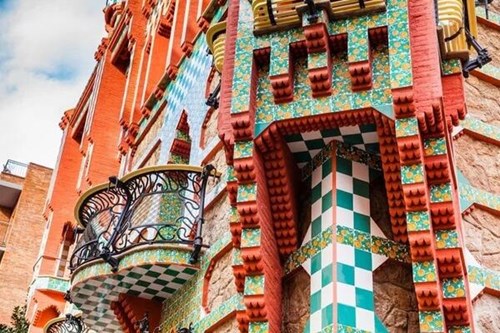
Image courtesy: Swedish Nomad
Casa Vicens is a stunning residential building located in the Gràcia district of Barcelona, designed by renowned architect Antoni Gaudí. Built between 1883 and 1885, Casa Vicens is considered one of Gaudí's earliest masterpieces and showcases his distinctive architectural style.
The building features a colourful facade adorned with intricate ceramic tiles, geometric patterns, and Moorish-inspired motifs. Casa Vicens was originally commissioned as a summer residence for the Vicens family and is now recognised as a UNESCO World Heritage Site. Visitors can explore the building's interior, which combines elements of Catalan modernism with influences from Islamic and Oriental art.
Did you know? Casa Vicens was Gaudí's first major commission as an independent architect, marking the beginning of his illustrious career. The building's innovative design and use of materials foreshadowed the groundbreaking architectural achievements for which Gaudí would later become famous.
Address: Carrer de les Carolines, 24, 08012 Barcelona
18. Barcelona Pavilion
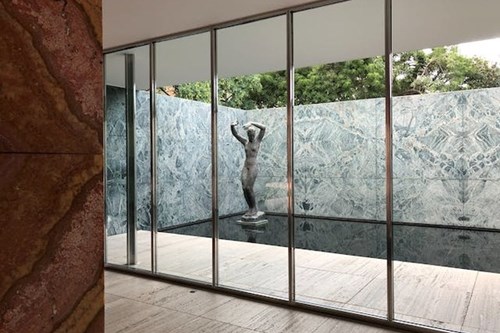
The Barcelona Pavilion, also known as the German Pavilion, is a modernist masterpiece designed by architect Ludwig Mies van der Rohe for the 1929 Barcelona International Exposition. The pavilion is renowned for its minimalist design, characterised by open spaces, clean lines, and the innovative use of materials such as marble, steel, and glass.
The building's simple yet elegant aesthetic reflects Mies van der Rohe's famous dictum, "less is more." Despite being dismantled after the exposition, the Barcelona Pavilion was later reconstructed in the 1980s as a permanent architectural exhibition. Today, it serves as a museum and cultural centre, showcasing the enduring influence of modernist design.
Did you know? The Barcelona Pavilion is considered one of the most important works of modern architecture and a seminal example of the International Style. Its sleek, functional design has inspired generations of architects and designers around the world.
Address: Av. de Francesc Ferrer i Guàrdia, 7, 08038 Barcelona
19. Plaça de Catalunya
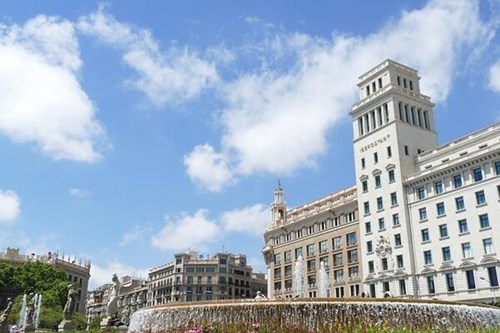
Plaça de Catalunya is the central square of Barcelona, located at the intersection of the city's major thoroughfares and neighbourhoods. Built in the early 20th century, the square serves as a bustling hub of activity, surrounded by shops, cafes, theatres, and cultural institutions.
Plaça de Catalunya is known for its iconic fountains, statues, and landscaped gardens, providing a tranquil oasis amidst the bustling city streets. The square is also a popular gathering place for locals and tourists alike, offering ample space for relaxation, people-watching, and socialising.
Did you know? Plaça de Catalunya is one of the largest squares in Spain, spanning an area of over 48,000 square metres. It serves as a major transportation hub, with several bus stops, metro lines, and train stations converging at the square, connecting it to various parts of the city and beyond.
Address: Plaça de Catalunya, 08002 Barcelona
20. Museu Nacional d'Art de Catalunya (MNAC)
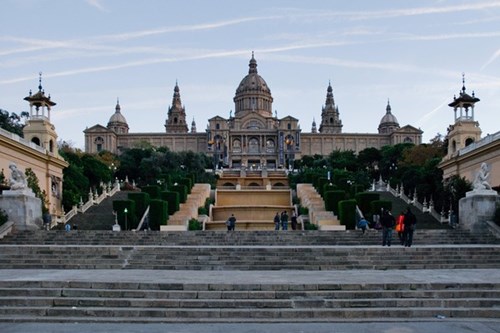
The Museu Nacional d'Art de Catalunya (MNAC) is a prestigious art museum located in the Palau Nacional, situated on Montjuïc hill overlooking Barcelona. The museum houses one of the most extensive collections of Catalan art in the world, spanning from the Romanesque period to the 20th century.
MNAC's diverse collection includes paintings, sculptures, decorative arts, and photography, showcasing the rich cultural heritage and artistic achievements of Catalonia. Highlights of the museum's collection include Romanesque frescoes, Gothic altarpieces, and modernist masterpieces by renowned artists such as Salvador Dalí and Joan Miró.
Did you know? The Palau Nacional, home to the MNAC, was built for the 1929 Barcelona International Exposition and was originally intended to serve as the headquarters of the Spanish Pavilion. Today, it stands as a symbol of Catalonia's cultural identity and houses one of the most important art collections in Spain.
Address: Palau Nacional, Parc de Montjuïc, s/n, 08038 Barcelona
21. Palau Güell
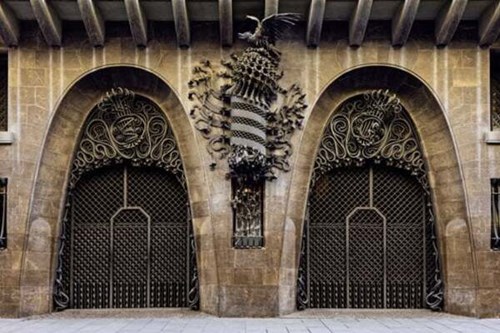
Image courtesy: Casa Batlo
Palau Güell is a magnificent mansion designed by renowned architect Antoni Gaudí, located in the El Raval neighbourhood of Barcelona. Constructed between 1885 and 1890, Palau Güell was commissioned by the wealthy industrialist Eusebi Güell as a private residence.
The mansion is characterised by its intricate wrought-iron gates, colourful mosaic chimneys, and opulent interior spaces adorned with luxurious materials and decorative details. Palau Güell is recognised as one of Gaudí's early masterpieces and is celebrated for its innovative architectural techniques and artistic flourishes.
Did you know? Palau Güell served as a residence for the Güell family until the mid-20th century, after which it was acquired by the Barcelona City Council and opened to the public as a museum. Visitors can explore the mansion's various rooms, including the grand entrance hall, parlour, and rooftop terrace, which offers panoramic views of Barcelona's skyline.
Address: Carrer Nou de la Rambla, 3-5, 08001 Barcelona
22. Hospital de Sant Pau
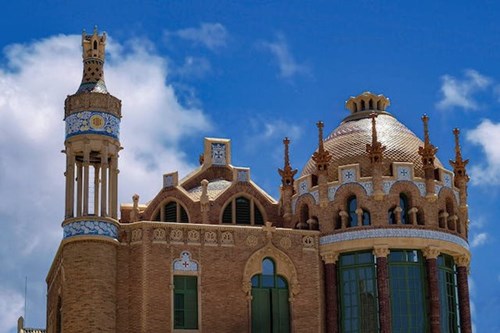
The Hospital de Sant Pau is a historic hospital complex located in the Eixample district of Barcelona. Designed by architect Lluís Domènech i Montaner, construction began in 1902 and was completed in 1930. The hospital is renowned for its stunning modernist architecture, featuring colourful mosaic facades, ornate sculptures, and intricate decorative details.
The complex consists of multiple pavilions interconnected by covered walkways and lush gardens, creating a serene and healing environment for patients. Today, the Hospital de Sant Pau is a UNESCO World Heritage Site and serves as a cultural centre, hosting exhibitions, concerts, and events.
Did you know? The Hospital de Sant Pau was originally built to provide healthcare services to the residents of Barcelona and was considered one of the most advanced medical facilities of its time. Its innovative design and emphasis on patient comfort and well-being set new standards for hospital architecture.
Address: Carrer de Sant Antoni Maria Claret, 167, 08025 Barcelona
23. Palau de la Generalitat de Catalunya
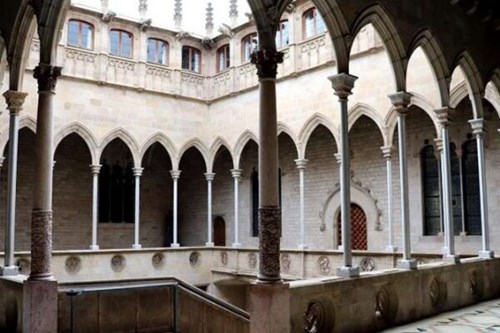
Image courtesy: Mil Viatges
The Palau de la Generalitat de Catalunya is the seat of the Catalan government, located in the heart of Barcelona's Gothic Quarter. Constructed in the 15th century, the palace is a stunning example of Catalan Gothic architecture, featuring a grand facade adorned with intricate stone carvings, medieval arches, and ornamental details.
The Palau de la Generalitat serves as the headquarters of the Government of Catalonia and is also used for official ceremonies, receptions, and cultural events. Visitors can explore the palace's historic chambers, courtyards, and halls, including the ornate Saló de Sant Jordi, which is used for official receptions and ceremonies.
Did you know? The Palau de la Generalitat is home to the "Galeria dels Presidents," a gallery displaying portraits of past presidents of the Generalitat of Catalonia. The gallery provides a visual history of Catalan politics and governance since the institution's establishment in the 15th century.
Address: Plaça de Sant Jaume, 4, 08002 Barcelona
24. Mercat de la Boqueria
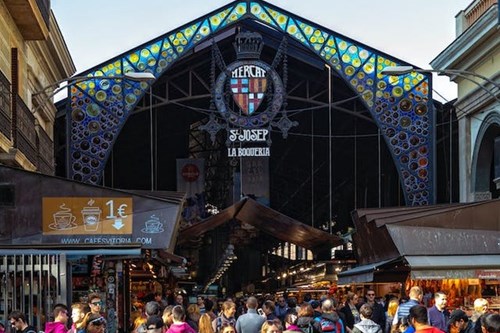
Mercat de la Boqueria, often simply referred to as La Boqueria, is a bustling food market located off La Rambla in the heart of Barcelona. It was inaugurated in 1836.
The market is renowned for its vibrant atmosphere, colourful stalls, and wide array of fresh produce, seafood, meats, cheeses, and gourmet delicacies. Visitors can explore the market's labyrinthine aisles, sample local specialties, and immerse themselves in the sights, sounds, and aromas of Catalan cuisine.
Did you know? La Boqueria's origins can be traced back to medieval times when it started as an open-air market outside the city walls. Over the centuries, it has evolved into a thriving marketplace and cultural landmark, attracting locals and tourists alike.
Address: La Rambla, 91, 08001 Barcelona
25. Torre Glòries
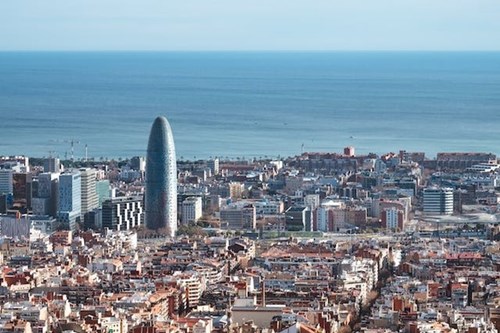
Torre Glòries, formerly known as Torre Agbar, is a modern skyscraper located in the Poblenou neighbourhood of Barcelona. Designed by architect Jean Nouvel, construction of the tower began in 1999 and was completed in 2005. Torre Glòries is characterised by its innovative design, featuring a cylindrical glass facade adorned with thousands of colourful LED lights that illuminate the building at night.
The tower serves as a prominent landmark on Barcelona's skyline and houses offices, conference facilities, and a shopping centre. Torre Glòries is celebrated for its sustainable design and energy-efficient features, making it one of the most iconic modern buildings in Barcelona.
Did you know? The design of Torre Glòries was inspired by the natural elements of Barcelona's landscape, including the nearby Montjuïc hill and the shapes of the surrounding mountains. The tower's distinctive form and striking aesthetic have made it a symbol of Barcelona's modernity and innovation.
Address: Avinguda Diagonal, 211, 08018 Barcelona
26. Palau Reial de Pedralbes
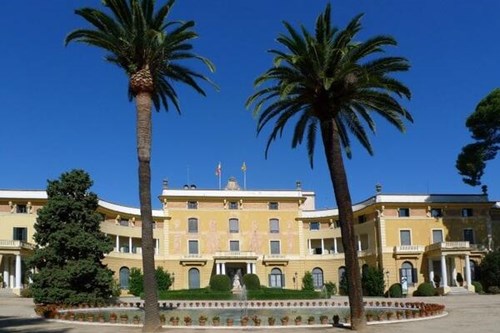
Image courtesy: Meet Barcelona
The Palau Reial de Pedralbes is a historic palace located in the Les Corts district of Barcelona. Built between 1919 and 1924, the palace served as the residence of the Spanish royal family during their visits to the city.
Designed in a neoclassical style by architect Eusebi Bona, the palace features a grand facade adorned with Ionic columns, ornamental sculptures, and decorative details.
Surrounding the palace are beautiful gardens, including formal terraces, fountains, and lush greenery, creating a tranquil oasis in the heart of the city. Today, the Palau Reial de Pedralbes is used for official receptions, ceremonies, and cultural events.
Did you know? The Palau Reial de Pedralbes was declared a Cultural Asset of National Interest in 1970, recognising its architectural significance and historical importance. The palace's elegant interiors, including the Throne Room and the Grand Hall, are open to the public for guided tours and special exhibitions.
Address: Avinguda Diagonal, 686, 08034 Barcelona
27. Port Vell
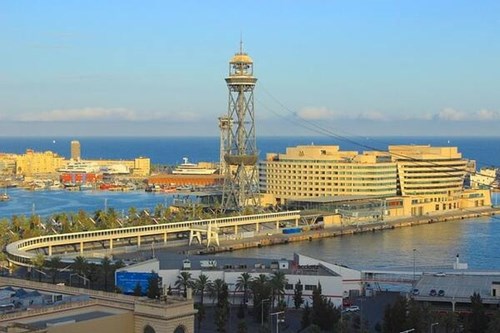
Port Vell is a vibrant waterfront area located in the Old Port of Barcelona, stretching from the Columbus Monument to the Barceloneta neighbourhood. Translating to "Old Harbor" in Catalan, Port Vell has undergone significant redevelopment in recent years, transforming it into a bustling hub of activity and entertainment.
The port is home to a marina, restaurants, shops, and cultural attractions, including the Maremagnum shopping mall and the Barcelona Aquarium. Visitors can stroll along the waterfront promenade, relax on the sandy beaches, or take a leisurely boat ride to enjoy panoramic views of the city's skyline and coastline.
Did you know? Port Vell was extensively renovated for the 1992 Summer Olympics, which were held in Barcelona. The redevelopment project included the construction of the Port Olímpic marina and the creation of new public spaces, parks, and leisure facilities along the waterfront.
Address: Moll d'Espanya, s/n, 08039 Barcelona
28. Parc de la Ciutadella
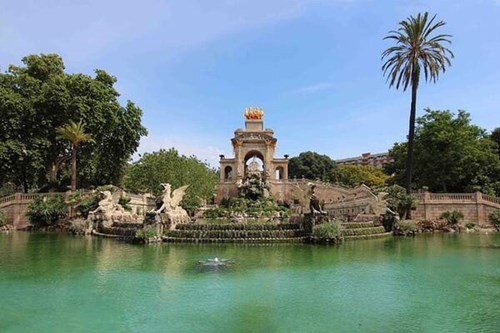
Parc de la Ciutadella is a sprawling public park located in the heart of Barcelona, adjacent to the Gothic Quarter and the Barceloneta neighbourhood. Created in 1872 on the site of a former military citadel, the park is renowned for its lush greenery, tranquil lakes, and architectural landmarks.
Visitors can explore the park's expansive lawns, wooded groves, and botanical gardens, or enjoy leisure activities such as picnicking, boating, and cycling. Parc de la Ciutadella is also home to several notable attractions, including the Barcelona Zoo, the Catalan Parliament building, and the iconic Cascada fountain.
Did you know? The centrepiece of Parc de la Ciutadella is the Cascada fountain, designed by Catalan architect Josep Fontsère in collaboration with sculptor Antoni Gaudí. The fountain features a monumental waterfall adorned with sculptures, reliefs, and ornamental details, making it a popular destination for visitors and a symbol of the park's beauty and grandeur.
Address: Passeig de Picasso, 21, 08003 Barcelona
29. Museu Picasso
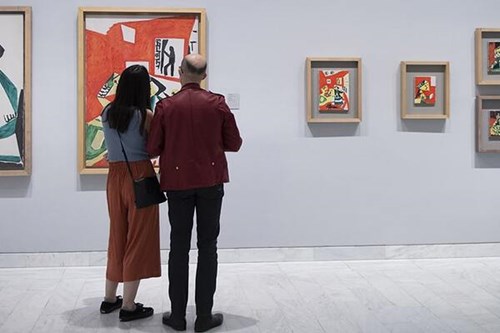
Image courtesy: Picasso Museum
The Museu Picasso is a world-renowned art museum located in the El Born neighbourhood of Barcelona. Founded in 1963, the museum is dedicated to the life and work of the legendary Spanish artist Pablo Picasso.
Housed in several medieval palaces, the museum's extensive collection includes over 4,000 works of art spanning Picasso's prolific career, from his early academic studies to his groundbreaking Cubist period. Highlights of the collection include paintings, drawings, sculptures, and ceramics, providing visitors with insight into Picasso's innovative artistic vision and revolutionary approach to art.
Did you know? The Museu Picasso is home to the largest collection of Picasso's artworks in the world, making it a premier destination for art enthusiasts and scholars alike. The museum's permanent collection is supplemented by temporary exhibitions, educational programs, and cultural events, ensuring that Picasso's legacy continues to inspire and captivate audiences from around the globe.
Address: Carrer Montcada, 15-23, 08003 Barcelona
30. Plaça d'Espanya
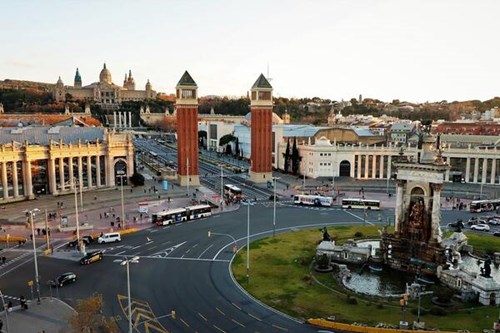
Plaça d'Espanya is one of Barcelona's largest and most iconic squares, located at the intersection of several major thoroughfares in the city. Built for the 1929 Barcelona International Exposition, the square is characterised by its grandiose architecture, monumental fountains, and expansive open spaces.
At the centre of the square stands the Venetian Towers, flanked by the twin buildings of the Fira de Barcelona convention centre. Plaça d'Espanya is also home to several other notable landmarks, including the Arenas de Barcelona shopping mall, the Magic Fountain of Montjuïc, and the majestic National Art Museum of Catalonia (MNAC).
Did you know? Plaça d'Espanya is renowned for its spectacular Magic Fountain of Montjuïc, which usually offers nightly light and music shows to the delight of visitors. The fountain's synchronised water jets, coloured lights, and musical accompaniment create mesmerising performances that attract audiences from around the world.
Address: Plaça d'Espanya, 08014 Barcelona
To Sum Up
Barcelona's landmarks offer a captivating journey through the city's rich history, culture, and architectural marvels. From the iconic Sagrada Família to the vibrant streets of Las Ramblas, there's something for everyone to explore and discover in this vibrant metropolis.
If you're looking for student accommodation in Barcelona, we invite you to experience the comfort and convenience offered at Pallars and Cristóbal de Moura. These buildings aren't just places to stay – they're vibrant communities where you can immerse yourself in the dynamic rhythm of student life while enjoying the modern comforts of home. Did you know aparto Barcelona Pallars and aparto Cristóbal de Moura offer short stays in the summer months for students.
Whether you're attending classes at one of Barcelona's esteemed universities or simply exploring the city's rich cultural offerings, Pallars and Cristóbal de Moura provide the perfect foundation for your Barcelona adventure. Don't miss out on the opportunity to make lasting memories in this vibrant city – plan your stay with us today and embark on an unforgettable journey in Barcelona!

